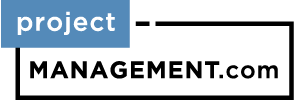A cost overrun occurs when a project’s hard or soft costs exceed its budget because of internal or external factors.
Regardless of the root cause, cost overruns can be lethal to a project if you don’t take the necessary precautions. Today, we’ll walk you through the basics of what a cost overrun is, how they happen, and how you can prevent them.
What is Cost Overrun and Why Does it Matter to Project Managers?

Technically speaking, cost overrun, AKA a cost increase or budget overrun, occurs because of internal or external factors that ultimately increase the total project cost. Regardless of the root cause, cost overrun occurs when a project budget exceeds the initial projections.
The last thing anyone wants to discuss as they approach a new project is the potential bumps in the road that may appear. After all, the start of a new project is an exciting time for teams. Yet, despite intricate plans from project managers, as the age-old saying goes, even the best-laid plans can go awry. If you’re looking to avoid dealing with a cost overrun as your projects take flight, you need to be prepared and plan ahead.
While industry-specific factors can be a contributing factor, especially in the construction industry, there are three primary causes of cost overrun:
- Economic factors: This can be anything from budget miscalculations, a sudden increase in costs (due to larger scale economic factors, price inflation, etc.), or even supplier price manipulation.
- Technical considerations: These include inaccuracies in project planning, diversion from best practices in project management (including lack of software utilization), and even delays in progress (from outside contractors, etc).
- Internal factors: These considerations encompass internal problems, such as inner-team conflict, scope creep, lack of leadership, and decrease in commitment levels
What’s more, cost overruns are a significant threat to project managers because of their impact on the projects themselves. For a successful project to occur, limiting any factors that might contribute to scope creep is key.
Overruns are extremely costly to organizations, particularly in industries like tech and IT, where on average, overrun projects exceed budget plans by 27%. Moreover, a whopping 55% of project managers cite cost overrun as a main contributor to project failure – making it one of the most lethal threats to project success and longevity overall.
Learn more about cost overruns in construction.
Causes of Cost Overrun
As we identified earlier, cost overrun predominantly stems from problems within three categories: economic factors, technical considerations, and internal factors. While cost overrun can have majorly detrimental effects on your project, the good news is, it leaves hints along the way. If you can act quickly enough, you can sometimes avoid a majority of the negative impacts, but first, you need to understand the root causes of cost overrun.
- Lack of risk management: Many projects fall victim to cost overrun simply due to a lack of risk management. Failure to consider the potential roadblocks you may encounter means they may be more costly to your bottom line if they come up throughout the process.
- Scope creep: While it may sound intimidating, scope creep simply refers to growing project objectives that expand beyond the intended initial purpose of the project. This often happens in dynamic and fast-moving industries, especially in startups or tech companies, which may have needs that change quickly.
- Inaccurate project cost estimates: Sometimes the easy explanation for scope creep is the correct one – that the project went over budget due to inaccurate cost estimates due to an underestimation of costs or technical error.
- Lack of effective communication: Communication is key when it comes to running a successful project. When teams fail to communicate effectively or miscommunicate throughout the process, it leaves the door open for cost overrun to run rampant.
Featured Partners: Project Management Software
The Do’s & Don’ts of Overrun Costs in Project Management
Here are the do’s and don’ts you need to know if you want to prevent cost overrun in your business:
| Do: | Don’t |
|---|---|
| • Create a detailed plan ahead of time, including the project budget, scope, and stakeholders so everyone is on the same page from day one. Be sure to document the plan thoroughly as well. • While it might feel pessimistic to discuss contingency planning as you dive into a new venture, it’s a necessary step to safeguard your team’s investments in the project. When you work in project management, redundancy is your friend. Create backup plans for every possible situation. • Work smarter, not harder, and utilize project management software options. Make sure your team is using every tool available to communicate, track progress, and stay in alignment with overall project goals. • Success leaves clues. Review past projects and historical data to learn from past wins and losses and get ahead of the game. • Define team roles and objectives early – and refuse to allow your team to get off the path with additional objectives and divergent tasks. | • Last-minute planning will only hurt your project. Don’t rush planning, put off project planning to the last minute, or fail to write down key plan aspects, like scope, budget, and more. • Don’t neglect contingency planning or assume your project won’t deviate from the plan. Planning for all possible outcomes is key to getting ahead and avoiding unexpected costs that can quickly spiral out of control. • Project management tools are your friend when it comes to avoiding cost overruns. Don’t neglect project management software when it comes to keeping things on task, making a work breakdown structure, and more. • The past holds many lessons when it comes to teaching you how to succeed in the now. Don’t overlook the importance of historical data and past projects’ successes and failures. • Scope creep can sink in early – and lead to devastating effects on your project. Don’t neglect to meet with your team early to define roles and project objectives. |
Preventing cost overrun isn’t a game of luck, it comes from following a detailed process that targets the roots of overrun before it ever has a chance to develop.
How Can Project Management Software Help Prevent Cost Overruns?
As a project manager, having oversight over the project’s status and progress as you journey towards completion is paramount. That’s where project management software can save the day. Project management software gives you the power to oversee the process from start to finish. Putting project management software to work for your team gives you the power to monitor task progress, get ahead of potential roadblocks, ensure the project is staying on budget, and even communicate with team members. If you’re looking to avoid scope creep in your project, utilizing project management software can be a great way to stay ahead of potential issues.
How to Mitigate Damage When You Experience Cost Overrun
Once your project has already experienced cost overrun, it’s too late for preventative measures. However, it might not be too late to save your project from an untimely fate. Once your project has run into cost overrun, here’s what you can do to get back on track and prevent further issues:
- Communicate with key stakeholders: While it might sound like a daunting task, communicating a budget overrun sooner rather than later is crucial. Be transparent and upfront about the situation, even if stakeholders are upset by the news. Remember: working together is the only way to fix the situation.
- Ensure your systems are working properly: When used correctly, project management software is a tremendous tool to prevent cost overrun. In fact, 47% of companies using project management software say it’s had a positive impact on the accuracy of project cost estimates
- Identify the problem: If the problem stems from something other than systematic failure in project management software utilization, you need to investigate the other potential causes of overrun. Carefully go through the aforementioned items and consider where the “leak” is coming from.
- Set your contingency plan into action: Now is the time to set that careful contingency planning into action. Consider the best path forward and how to prevent the situation from escalating. The goal now is to get things back on the path and intercept any lasting issues that could exacerbate the problem.












